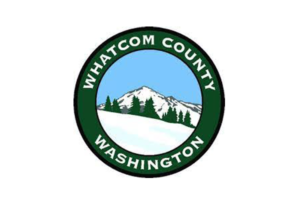Regenerative agriculture is a term and practice gaining attention throughout the worlds of food and climate science and increasingly appearing in mainstream conversations. Regenerative agriculture refers to
“agricultural practices that work closely with nature to utilize photosynthesis and healthy soil microbiology to draw down greenhouse gases” (Terrra Genesis International).
To put it more simply, regenerative agriculture practices sequester carbon from the atmosphere and store it in the soil, simultaneously improving soil health and productivity and reducing atmospheric gasses that cause climate change.
Even as the term appears more and more in mainstream media, many people do not understand what it means, what practices it entails or the implications on our food system and climate.
The Importance
As awareness about the dangers of climate change have spread, “sustainability” has become a focus amongst consumers and businesses. Concerns about climate change have led to a widespread shift amongst businesses and consumers to purchase more fuel efficient cars, install renewable energy, reduce waste, use more sustainable materials and change consumption habits.
Despite progress, the global economy is still addicted to carbon energy and greenhouse gas emissions are continuing at an unsustainable rate. This is due to the increasing demands of a growing global population and widespread economic development that is outpacing the shift to renewable energy. The world is moving closer to the 1.5 degrees celsius atmospheric warming limit which scientists have warned against for years. A growing population of scientists are now concerned that simply moving to more sustainable forms of food and energy is not enough: in addition carbon must be actively removed from the atmosphere (World Resources Institute).
A myriad of carbon removal ideas are being explored today. Regenerative agriculture practices is one of the most exciting because of its large capacity to sequester carbon and store it long term. Many carbon removal proposals require a significant amount of energy or result in other negative climate impacts, whereas regenerative agriculture practices improve soil health and offer opportunities to improve farm profitability, resilience, and independence.
The Practice
Modern farming techniques that involve tilling, monoculture, intensive spraying, and animal confinement are large contributors of greenhouse gas emissions and to the current climate crisis.
Regenerative agriculture, on the other hand, encompasses a holistic approach that builds soil health with greater benefits to the environment. Regenerative practice experiments are being conducted around the world and can vary significantly based on the climate, soil and food produced, but often incorporate one or more of the following methods (Rodale Institute):
-
- Reduced tillage / No-tillage
- Cover crops
- Crop rotations
- Multi-species rotational grazing
- Agroforestry
- Composting
Systems that increase complexity and attempt to work within the natural environment are often the most promising. This involves working with a diverse set of crops, animals, and trees and requires a radically different set of farming practices and attention than conventional commodity farming.
The Benefits
The value of regenerative agriculture extends well beyond carbon sequestration and soil health. Improving agriculture practices improves food quality and creates opportunities for farmers, businesses, and investors.
For the Climate
The opportunity for impacting climate change on a global scale is enormous due to the expansive amount of existing agricultural land. The Rodale Institute performed an in-depth study of the potential for land to sequester atmospheric carbon and found that a global shift to regenerative practices could sequester more than 100% of annual global emissions. Other estimates vary, but consistently show that the impact could be enormous. The Regeneration Institute estimates that transitioning 10%-20% of agricultural production to regenerative practices can sequester enough carbon to reverse climate change, and the European 4 Per 1000 Initiative estimates that increasing carbon in soil stored on farms by just 0.4% per year could offset 4.3 billions tons of C02 per year.
For Farmers
Farmers face additional costs, risks, and challenges to implementing regenerative practices but are increasingly being presented with upside opportunities. Studies have indicated that regenerative and organic agriculture practices can produce crop yields that exceed or at least become equivalent with conventional systems while relying on far fewer costly inputs. Additionally, organic and diversified systems have demonstrated greater resilience to climate fluctuations (Rodale Institute).
Farmers may have an opportunity to monetize their carbon sequestration efforts in the near future. Some organizations and businesses are creating marketplaces for agricultural carbon credits that will provide new opportunities for farmers.
- Indigo Agriculture has raised money to guarantee payments to farmers for carbon sequestration
- Nori is developing a marketplace for farmers to sell carbon credits to businesses
- MAD Agriculture, a non-profit, is working with farmers to convert to regenerative practices, while financing their conversion and paying them for carbon removal
In order to attract farmers, the carbon credit price per ton needs to be high enough and support for farmers needs to be in place–for learning new methods, financing and reducing risk through the transition–but the potential is high. Hope for a future US carbon cap and trade program would further increase the value of potential carbon sequestration sales by farmers.
For Food Production
Regenerative agriculture can restore degraded soil and increase soil organic matter. One study indicates that increasing organic matter in soil will enable the land to hold more than 20,000 additional gallons of water per acre (Natural Resources Defense Council). This healthier, more nutrient dense soil can then produce more resilient, nutrient dense foods.
For Businesses & Investors
Companies such as Danone, Applegate, Patagonia, and General Mills are examples of large businesses that are making a push to support regenerative agriculture practices. They see it as a way to reduce emissions while appealing to increasing consumer demands for sustainable products.
Regenerative agriculture businesses are also attracting attention and money from large investors. A recent article noted that 70 investment firms with $47.5 billion of assets under management have invested in regenerative ag businesses. A number of mission-driven investment groups have also begun to focus specifically on regenerative agriculture. While capital can still be a challenge, increasing knowledge of regenerative agriculture is bringing more capital into the space.
The Challenges
Despite the vast potential for regenerative agriculture, a number of significant challenges and barriers must be overcome for continued scale and growth.
Costs and Infrastructure: Smaller, diversified farms face higher labor costs and often face much more expensive logistical and processing costs than large conventional farms. For example, small ranchers have few processing plants to choose from and quality and costs can vary greatly. Thus, they face higher costs and less consistent quality. Freight and transportation can also be significantly higher than conventional programs due to smaller volumes. Similar challenges are faced by small farmers around the world who must compete with large agribusiness. Small-scale, diversified farming operations typically must charge higher prices for end products which can limit consumer demand.
Risk and Insurance: Many farmers have spent years investing in and optimizing conventional practices and many have taken on debt to do so. Farmers looking to switch to regenerative practices face the daunting task of learning and developing new practices, regenerating their soil, and developing new sales channels for different products. Many established farmers may be burdened with debt or not interested in the effort and risk of such a transition which will have unknown impacts on their costs, yields, and sales. Compounding the issue is that subsidized federal crop insurance programs focus on commodity crops, not specialty crops, greatly increasing the risk and cost of transition to more diversified operations.
Consumer Education and Product Labeling: Consumer education and labeling is a significant challenge for the regenerative agriculture movement. While consumers are increasingly paying attention to labels and certifications on food, there is also a lot of confusion and unclear information. Organic purchasing is a great example. While some regenerative agriculture is inherently organic some is not, and the terms “organic” and “natural” are not always related to sustainable practices.
In the meat industry, labeling can be even more confusing. In 2015, the USDA removed the Country of Origin Labeling requirement on beef, which means all imported grass-fed beef can be labeled “Product of the USA.” As a result 75 – 80% of grass-fed beef sold in the US is imported, and much of this beef is from unsustainable sources, such as cows grazed on cleared rain forest land (The Market Potential for U.S. Grassfed Beef). Furthermore, some 100% grass-fed beef is still from cows raised in confinement and fed grass pellets and even grains. When pasture-raised meat can be fed grain and grass-fed beef may be from confined feeding operations, it can make it challenging to know what you are buying.
Another challenge is consumer preference for fresh beef. In many parts of the US, ranching, like farming, is a seasonal practice and therefore, beef produced through regenerative practices must be frozen in order to have supply throughout the year. While many industry insiders and even chefs agree that freezing beef is akin to aging and results in more tender meat, US consumers broadly shun frozen meat, and this stigma reduces demand.
Limited Long-Term Data: While regenerative agriculture has shown immediate impacts in soil health, the long-term effects remain somewhat unknown. Natural systems are inherently variable which makes it challenging to measure and monitor the long-term carbon benefits of each practice. Some of the challenges include evaluating the permanence of sequestered carbon and whether carbon sequestration in animal agriculture practices can fully offset methane emissions.
Summary
Regenerative agriculture is a hot topic and one that is likely to be studied increasingly over the coming years. While there are still unknowns in the science, the potential appears to be vast if markets are developed and practices are scaled up. If you are interested in learning more, we recommend the following resources, or please reach out to us directly.
Resources for continued reading:
Stone Barns Center- Back to Grass: The Market Potential for U.S. Grassfed Beef
Rodale Institute- Regenerative Agriculture and Climate: A Down-to-Earth Solution to Global Warming
Paul Hawken- Drawdown: The Most Comprehensive Plan Ever to Reverse Global Warming
Terra Genesis International- Regenerative Agriculture Definition



